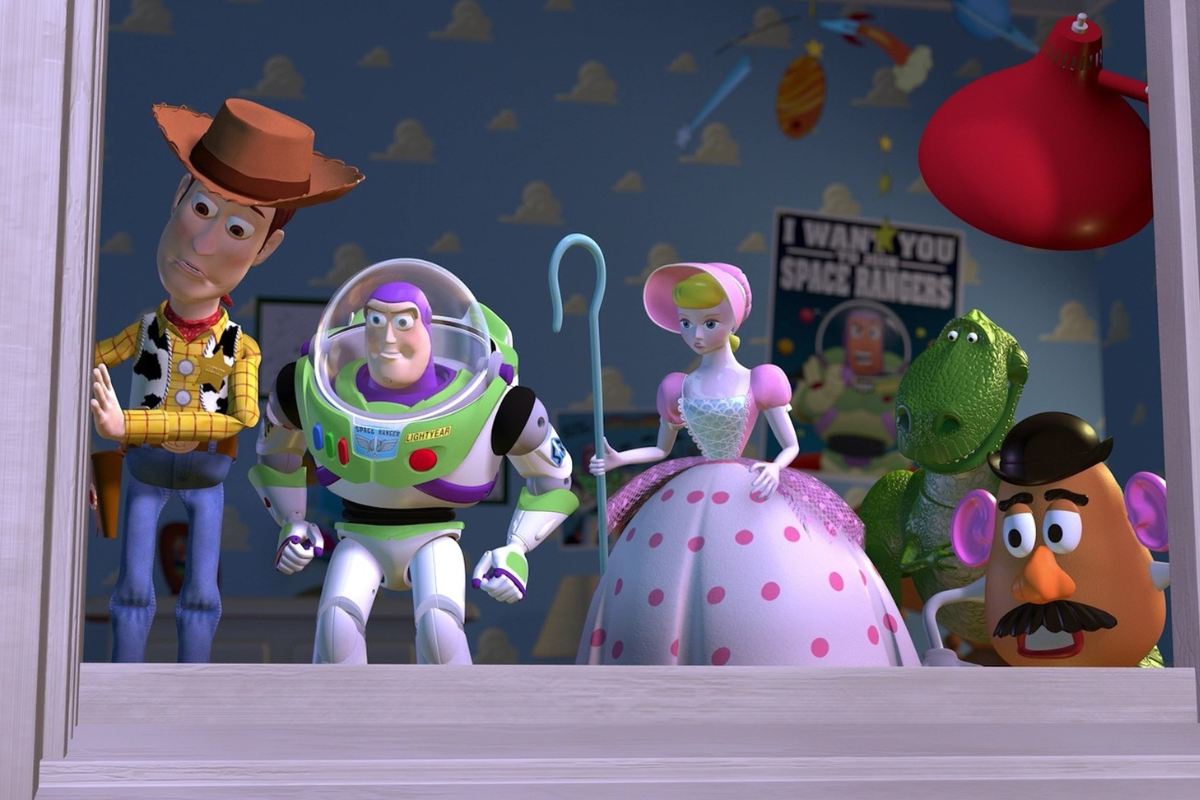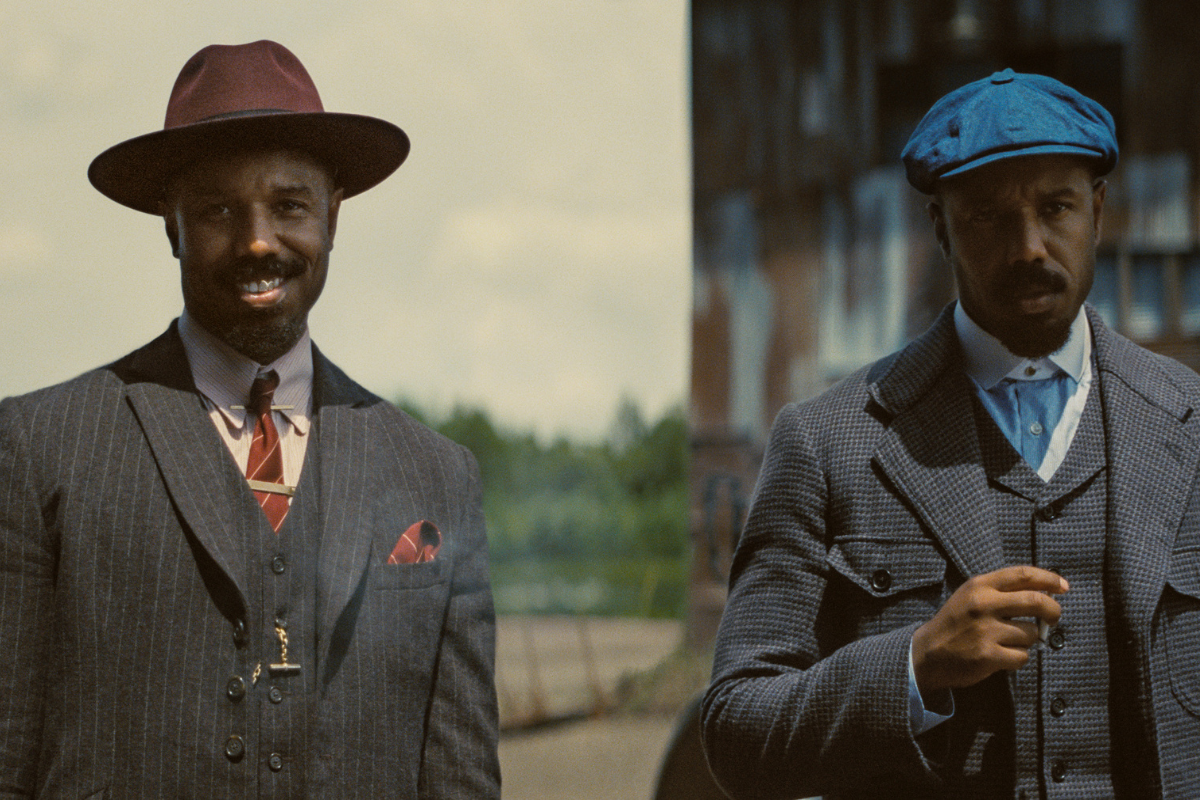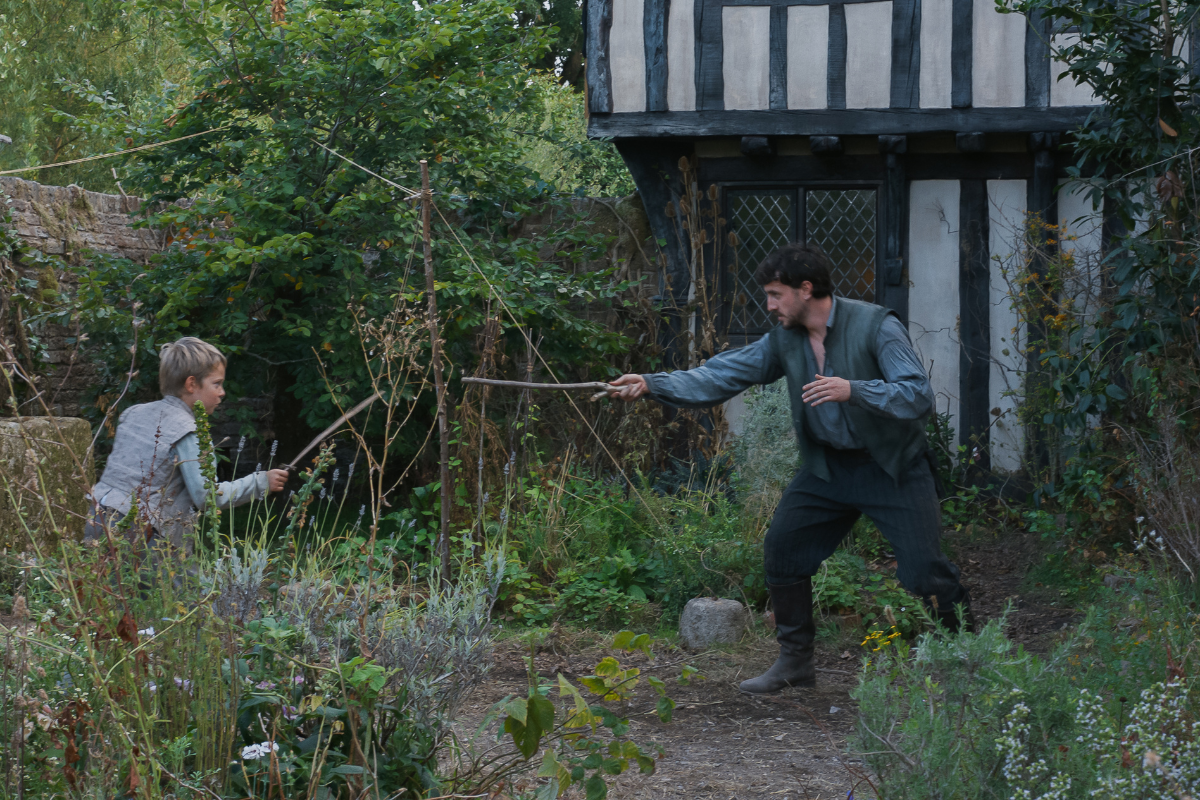Understanding Screenwriting from the Script Up
Film historian and author Tom Stempel continues his long-standing “Understanding Screenwriting” column on Script’s site, exploring current and past films from the perspective of the screenplay itself.
Film historian and author Tom Stempel continues his long-standing "Understanding Screenwriting" column on Script's site, exploring current and past films from the perspective of the screenplay itself.
I’m Tom Stempel, and I write about screenwriting. Well, if you have already been following this column at The House Next Door or Creative Screenwriting you know that from the first 159 columns. Or you may have just read one or more of my books and Google me from time to time to find out what I am up to.
For those of you who are complete newbies to my column, let me explain what it is I do. I review movies and television from the standpoint of screenwriting. Most film reviewers mention the script or the screenwriters of films sparingly, if at all. I cannot tell you the number of reviews of film I have read where the critic goes on and on about structure, character, and dialogue without ever mentioning the screenwriters or the script. So, I will be looking at the screenplays for new movies, old movies, and television movies and shows, as well as writing occasional other items, such as appreciations of screenwriters who have died, plays based on films, books on screenwriting and screenwriters, and assorted other sundries.
I should also explain what I DON’T do in this column. This is not a How-to-Write-a-Screenplay column. This is not a How-to-Get-An-Agent-and-Sell-Your-Screenplay column. It is not entirely a Craft-of-Screenwriting column, although the craft certainly gets mentioned. Far from a beginning level class, this is more of an advanced graduate seminar in the nuances of screenwriting. That means, based on my years of experience as a film historian focusing on the history of screenwriting and my years teaching screenwriting at Los Angeles City College, I take a very jaundiced view of a lot of the ruling clichés of screenwriting. Here are just two to give you a feel for my kind of iconoclasm.
The first one came from a question from a former student about the importance of the three-act structure in film, since a script he was working on seemed to have five acts. I replied, “Just as you can divide any film into three acts, you can also divide it into five acts. I have a particular preference for four, but that's only because I ran track in high school and one of my events was the mile run, which was four times around a quarter mile track. I just got used to thinking in terms of fours. If you think I am joking, look at all the screenwriting textbooks that talk about the three act structure but disagree on exactly how long each act should be. The main thing is to keep the story moving forward and keep us involved with the characters and the story. If you do that, nobody is going to count the acts, however they count them.
“The three-act structure, by the way, comes from the Broadway theatre of the 1930s and 40s. Almost no stage play written now uses three acts. They are either a long one-act play, or have two acts. Shakespeare, by the way, used what was then the traditional five acts, so I supposed you could use a film of one of his plays as an example. Is this whole question to settle a bar bet? I can't imagine it has a serious purpose.”
Well, that ought to settle that. One question that kept coming up from would-be screenwriters who read the column was why did I not deal with the Hero’s Journey, which everybody knows is required to make a good film. Finally I got so tired of the question, I wrote this in 2010:
“Learning about the mythology of the Hero’s Journey will not teach you a damned thing about screenwriting. It will only teach you what development executives think a movie has to have. The Hero’s Journey pattern of narratives in various cultures began in Joseph Campbell’s 1949 book, The Hero with a Thousand Faces, which is generally considered to be a rip-off of Sir James George Frazier’s epic late 19th-early 20th century study of comparative cultures, The Golden Bough. Campbell’s book would have been forgotten by now, except that George Lucas, trying to convince people that the first Star Wars trilogy (1977-1983) was more than just sci-fi movies for kids, promoted the film as being influenced by Campbell. Campbell, being something of a celebrity whore, bought into that and kept popping up on PBS with Lucas to explain it all for you. The Lucas films a) made more money than God, and b) established the teen-fan boy audience as the audience primarily aimed at by Hollywood. So it is not surprising that Campbell’s ideas, especially as promoted in Christopher Vogler’s 1998 book The Writer’s Journey: Mythic Structure for Writers, became the standard clichéd structure that Hollywood believes in.
“The Hero’s Journey follows a young man as he is called to adventure, resists the call, gets supernatural help, goes through a bunch of trials, is tempted by Woman, wins out in the end, and returns to his world. It is more complicated than that, and you can look it up on Wikipedia if you want to. Needless to say, it is a rather limited view of what a movie can be, especially with its patriarchal, teen-boy fear of women. You may be able, of course, to fit several classic films into the archetype. Just off the top of my head, you can do it with Citizen Kane (1941), Lawrence of Arabia (1962), and Fellini’s 8 ½ (1963) without breaking too much of a sweat.
“On the other hand. Again, just off the top of my head, here are some great or at least good classic scripts that do not fit into that paradigm: It Happened One Night (1934), The Thin Man (1934), Nothing Sacred (1937), His Girl Friday (1940), Brief Encounter (1945), Miracle on 34th Street (1947), The Treasure of the Sierra Madre (1948), The Gunfighter (1950), The Narrow Margin (1952), Roman Holiday (1953), Some Like it Hot (1959), Dr. Strangelove (1964), Blow-Up (1966), Chinatown (1974), Return of the Secaucus Seven (1979), Terms of Endearment (1983), Hannah and Her Sisters (1986), and Thelma & Louise (1992).” O.K., that list was not entirely off the top of my head: they were all nominated for an Academy Award in one writing category or another.
I have since, from time to time, made it a point to mention when a good script does NOT follow the Hero’s Journey. If you are completely freaked out by my comments on the three act structure and the Hero’s Journey, then reading this column may do you a world of good, at least for your soul if not necessarily your bankbook.
I mentioned that my comments about the Hero’s Journey were driven by comments from readers. One of the great pleasures of doing this column over the years was the tremendous quality of the comments. There was, thank God, very little of the typical “You suck,” “No, you suck” that one gets all too often on the Internet. Let’s try to keep up the tradition of intelligent, perceptive comments. I will deal with the most interesting ones in the following column in a section near the top of the column called Fan Mail.
Short Takes
Since I took a sabbatical from writing this column for the past year (I was working on another project I will tell you about later and dealing with what a friend of mine called “life occurrences"), the rest of this column will be some short takes on films from that time (SPOILER ALERT).
The Big Sick (2017, written by Emily V. Gordon and Kumail Nanjiani) is based on the true story of the two writers from the early days of their romance. You will learn I am skeptical about “writing about what you know,” but either fate or the writers have structured the film beautifully. Emily and Kumail meet, have a romance, break up, and at forty minutes into the film, she is put into an induced coma. That takes one of the two leads out of the picture. But then the writers bring in her parents, who are wonderful characters and keep the film afloat. Don’t worry, Emily gets out of the coma and gets well.
Wind River (2017, written by Taylor Sheridan). Sheridan wrote Hell or High Water (2016) and this is another corker. Jane Banner, a young FBI agent, is sent into an Indian reservation to investigate a murder. She teams up with Corey Lambert, a tracker for the Fish and Wildlife Service. What makes the script interesting is the way Sheridan captures the cultural nuances of life on the reservation. He also avoids the obvious: look at the scene where Banner goes to Lambert’s house. You are expecting a romance, but you get a much more interesting scene. Unfortunately for Sheridan, the film was produced by the Weinstein Company, whose bosses were so busy dealing with legal matters they did not have the time to promote the film properly. That has not hurt Sheridan’s career. His sequel to his 2015 film Sicario is due out shortly, and he is creating a television series called Yellowstone. Power fades, talent abides.
Lady Bird (2017, written by Greta Gerwig). I was not as taken with this script as a lot of people were. Its view of a teenage girl in her last year of high school was not as fresh as I had hoped. On the other hand, the script gave the actors a lot of interesting scenes to play and they played the hell out of them.
Three Billboards Outside Ebbing, Missouri (2017, written by Martin McDonagh). McDonagh, the Irish playwright and screenwriter (In Bruges [2008] and Seven Psychopaths [2012]), is in top form here only in the first three quarters of the film. Mildred puts up three billboards outside of town, complaining the local sheriff has failed to solve the brutal murder of her daughter. The sheriff and his deputy don’t take too kindly to that, but react in different ways. Mildred is a tough character, but she is rather monotonous as the film goes on. The deputy has an unmotivated character change at the end.
Star Wars: The Last Jedi (2017, written by Rian Johnson, based on characters created by, oh, what was his name again, you remember, ah, yes, George Lucas). Unusual for a Star Wars film in that there is more emphasis on character. There is a lot of action and special effects, of course, but what holds the script together are the character scenes between the elderly Luke Skywalker and the young Rey. The scenes give Mark Hamill more to do as an actor than he has had in any previous Star Wars movie. A good example of what I call “writing for performance.”
The Shape of Water (2017, screenplay by Guillermo del Toro & Vanessa Taylor, story by Guillermo del Toro). Speaking of writing for performance, del Toro and Taylor have created wonderful characters for their actors to play. Sally Hawkins brings a lot of nuance to the details the writers give her for her role as Elisa Esposito. The screenwriters have also provided a rich variety of tones to the film. It’s part spy thriller, part sci-fi, part horror, part love story. The script and del Toro’s direction keep the tones beautifully balanced.
I, Tonya (2017, written by Steven Rogers). Officially this is a biography of ice skater Tonya Harding, but Rogers has a lot of fun with the fact that everybody in the film has a different version of what happened and who did what. That all could have been a mess on screen, but Rogers keeps it in focus. He also gives us great characters. The obvious ones are Tonya and her mother, but the secondary characters are very well drawn. I particularly enjoyed Tonya’s ex-husband’s friend Shawn, who makes himself out to be a lot more of a smart operator than he is. Make sure you write your secondary characters as well as your main characters. It makes for a much livelier film.
Call Me by Your Name (2017, screenplay by James Ivory, based on the novel by André Aciman). Ivory won an Oscar for this script, but it was really a career achievement award for his directing career. The script is awfully slow getting going. Elio is the teenage son of an American professor in Italy. The professor invites post-doctoral students to stay the summer with him while doing research. This summer’s student is Oliver and Elio develops a mad crush on him. We are close to half-way into the film before Oliver and Elio get together. That might make sense if they had discussed the fact that Oliver is seven or eight years older than Elio, but neither one of them bring it up. We see the story from Elio’s perspective, but have no idea how Oliver feels about all of this. After the relationship is over Elio’s father gives him a warm-hearted speech about first love. That’s a great scene, but you may not believe a word of it.
Black Panther (2018. Written by Ryan Coogler & Joe Robert Cole, based on the Marvel Comics by Stan Lee and Jack Kirby). Thank God this first Black Panther movie is not another dreary origin story. It begins in the middle of the action and takes off like a house afire. It is yet another of those pictures that is not a Hero’s Journey, since T’Challa is being made the King of Wakanda at the beginning. His job is to protect the kingdom from all enemies, some who want to take over the kingdom and one who wants to kill him. Unlike most superhero movies, we get a lot of the culture of Wakanda, which makes the movie a lot richer and deeper than most. We also get a lot of interesting positive female characters (not the evil women in the Hero’s Journey paradigm) who are actively involved in the story. T’Challa has an all-female guardian team, and his sister is a combination of a bratty kid sister and Q from the Bond movies. Now that’s imagination on the part of the writers.
Beirut (2018, written by Tony Gilroy). Gilroy wrote four of the Jason Bourne films, so you know there is going to be action in this film, and there is. But there is also a lot of complicated plotting, as a former American diplomat is brought back to Beirut ten years after a career-ending experience there. Kidnappers of his old friend have asked for him to handle the negotiations. Gilroy is very ingenious at working it all out in ways that surprise us.
Tom Stempel is the author of several books on film. His most recent is Understanding Screenwriting: Learning From Good, Not-Quite-So Good, and Bad Screenplays.
Before you submit your script, make sure it's polished and ready with the help of our ScriptXpert Coverage and Development Notes!
ORDER NOW!
Our ScriptXpert Critique Service is back! Our team consists of more than experienced working screenwriters, we also have story analysts, development execs, directors, producers, and even filmmakers. Rest assured, we do not hire interns or college students. We only use readers who understand the industry on a professional level. Get Coverage or Coverage with Development Notes to see how your screenplay stacks up to what studios are looking for. Rush service available!
Tom Stempel is a Professor Emeritus at Los Angeles City College, where he taught film history and screenwriting from 1971 to 2011. He has written six books on film, five of them about screen and television writing. You can learn more about his books here. His 2008 book Understanding Screenwriting: Learning from Good, Not-Quite-So- Good, and Bad Screenplays evolved into this column. The column first appeared in 2008 at the blog The House Next Door, then at Slant, and then Creative Screenwriting before it found its forever home at Script.
In the column he reviews movies and television from the standpoint of screenwriting. He looks at new movies, old movies, and television movies and shows, as well as writing occasional other items, such as appreciations of screenwriters who have passed away, plays based on films, books on screenwriting and screenwriters, and other sundries.
In September 2023 Tom Stempel was awarded the inaugural Lifetime Achievement in the Service of Screenwriting Research by the international organization the Screenwriting Research Network.







